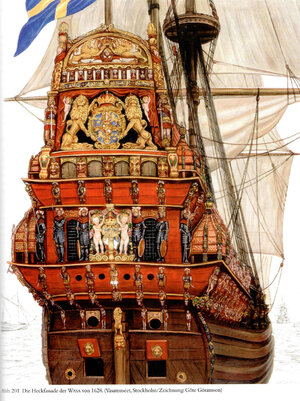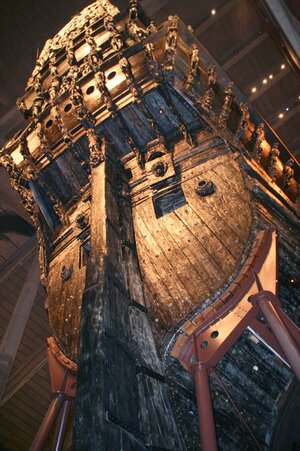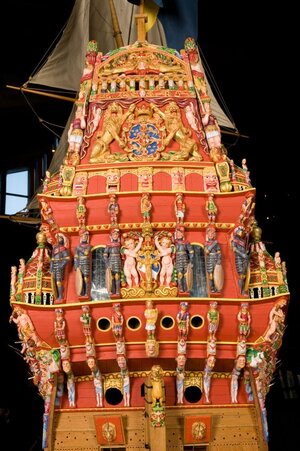That is EXACTLY what I envisioned in my mind but could not accomplish. I'll give it a go, Nigel. Thank you for taking the time to help me out.Paul
I use normal A4 printer paper.Envisage you are making the plank from the paper.Cut a strip an inch wide and place on the hull where the plank sits.Roughly mark the curve of the existing plank on the paper then remove and cut the curve using scissors.Continue trial fitting and trimming until the paper butts up tight against the last plank.You can the mark the other edge of the template to suit the plank width.I deliberately cut the plank a couple of mm wide to along for final shaping.
Yes this takes time but the results are worth it.Picture below of my Nuestra Señora,got so far edge bending but then had to cut from sheet due to the tight curves.
Kind Regards
Nigel
]View attachment 195784
Another question: I don't see any taper at all. What happens as you move more inboard toward the keel? Have you finished this hull and can you show me what that looks like?







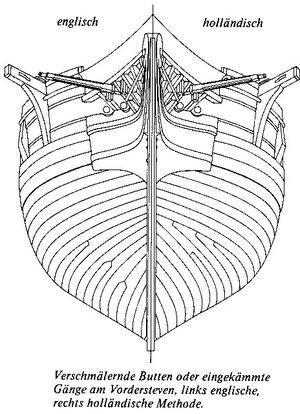
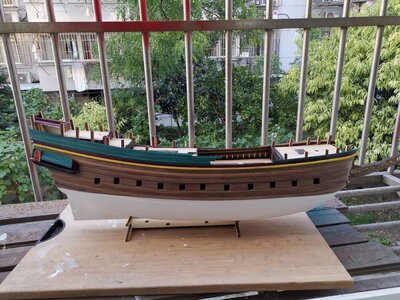
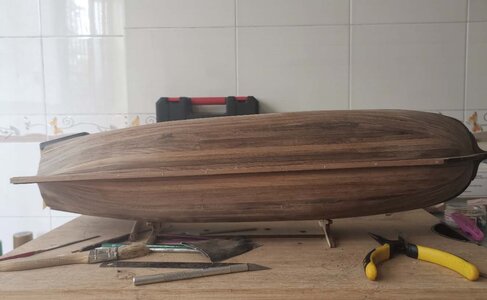
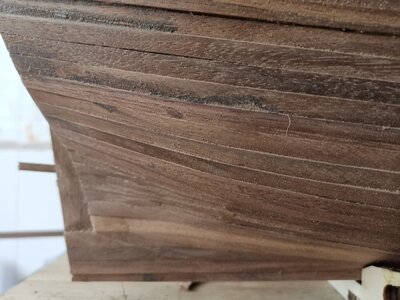
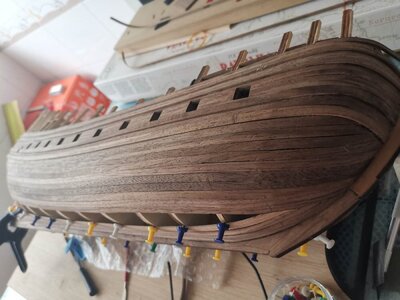
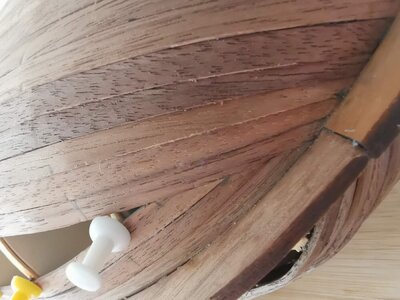
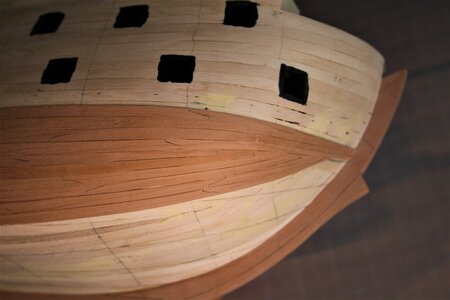
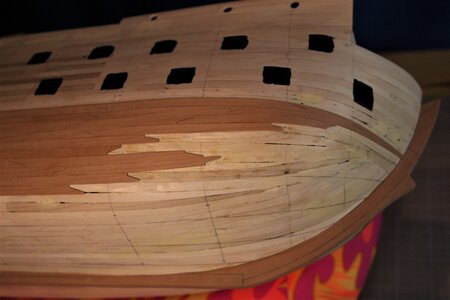
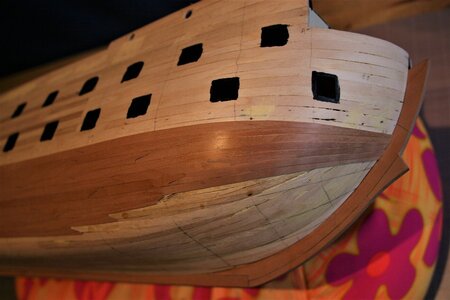
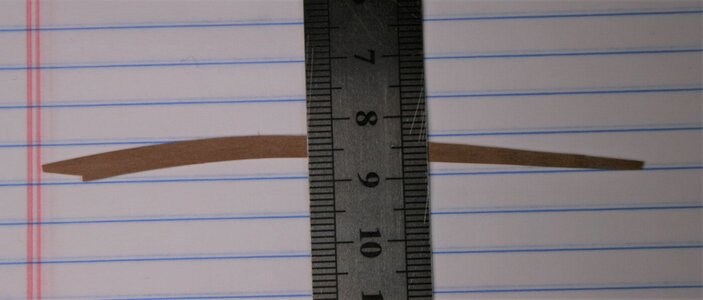
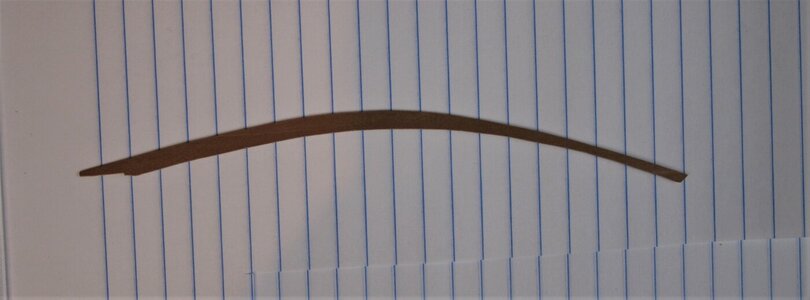


 I am very happy it is all panning out!
I am very happy it is all panning out!
